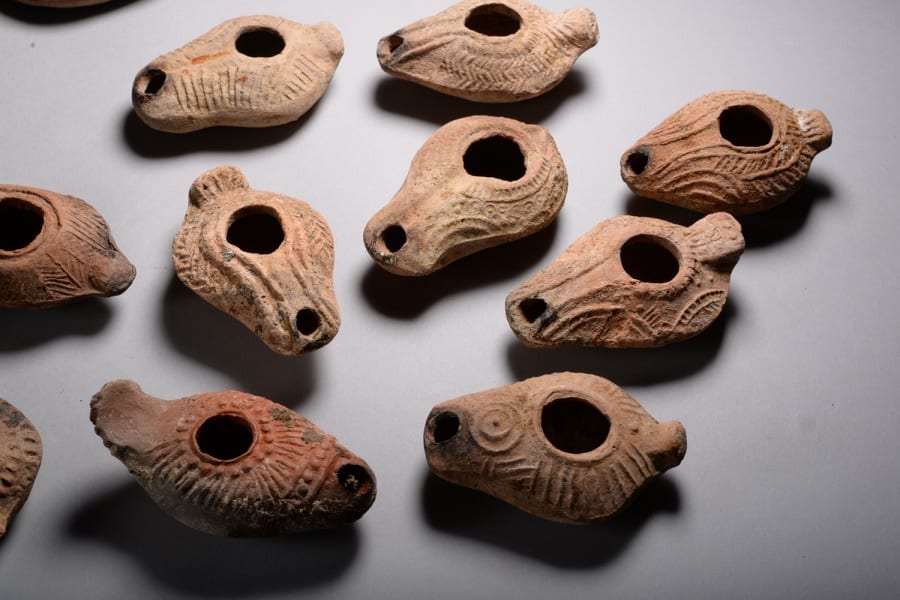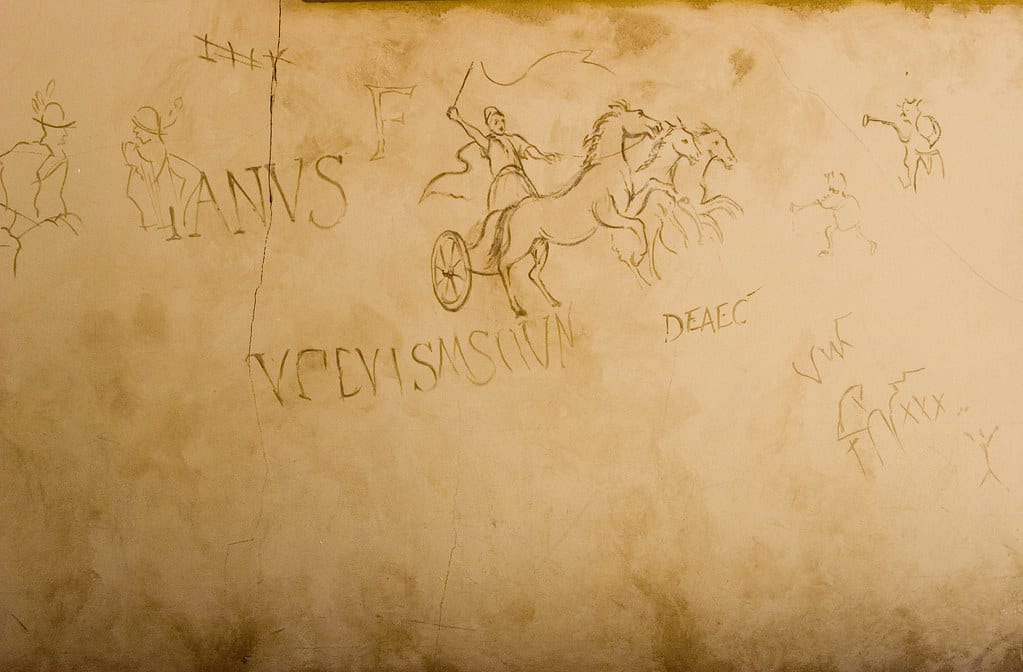 Movies and TV
Movies and TV  Movies and TV
Movies and TV  History
History 10 Things You Never Knew About Presidential First Ladies
 Movies and TV
Movies and TV 10 Zombie Movies That Will Actually Terrify You
 Humans
Humans 10 Times Scientists Were Absolutely Sure… and Absolutely Wrong
 Our World
Our World 10 Pivotal Moments for Life on Earth
 Movies and TV
Movies and TV 10 Most Realistic Medical TV Shows of All Time
 Creepy
Creepy 10 Eerie & Mysterious Ghosts of the Pacific Coast
 Weird Stuff
Weird Stuff 10 Typos That Accidentally Changed History
 History
History 10 Times Trickery Won Battles
 Technology
Technology 10 Awesome Upgrades to Common Household Items
 Movies and TV
Movies and TV 10 Movie Flops That Found Their Way to Cult Classic Status
 History
History 10 Things You Never Knew About Presidential First Ladies
 Movies and TV
Movies and TV 10 Zombie Movies That Will Actually Terrify You
Who's Behind Listverse?

Jamie Frater
Head Editor
Jamie founded Listverse due to an insatiable desire to share fascinating, obscure, and bizarre facts. He has been a guest speaker on numerous national radio and television stations and is a five time published author.
More About Us Humans
Humans 10 Times Scientists Were Absolutely Sure… and Absolutely Wrong
 Our World
Our World 10 Pivotal Moments for Life on Earth
 Movies and TV
Movies and TV 10 Most Realistic Medical TV Shows of All Time
 Creepy
Creepy 10 Eerie & Mysterious Ghosts of the Pacific Coast
 Weird Stuff
Weird Stuff 10 Typos That Accidentally Changed History
 History
History 10 Times Trickery Won Battles
 Technology
Technology 10 Awesome Upgrades to Common Household Items
Top 10 Reasons The Dark Ages Were Darker Than You Think
[Editors Note: Over the years Listverse has published numerous lists pointing out the positive aspects of the so-called “dark ages”. At the time this was a somewhat contrarian view. Not being one to shy away from contradiction and controversy, here we present you with the opposing opinion from a brand-new writer!]
Nowadays, it is all the rage among modern historians to reject the traditional view that the fall of Rome ushered in a “dark age.” This new orthodoxy was popularized by the historian Peter Brown, following publication of his book The World of Late Antiquity in 1971.[1] Because of his pioneering work in the field of late antiquity, the traditional view, which saw the period following the collapse of Rome until the coronation of Charlemagne in 800 AD as one of catastrophic decline, was replaced with a positive assessment of the intervening centuries as a period of religious and cultural innovation. The problem with this view, as historian and archaeologist Bryan Ward-Perkins explains in his masterful The Fall of Rome (2005), is that it places historians in the unusual position of being at odds with the archaeological evidence.
Top 10 Reasons The Dark Ages Were Not Dark
10 Violence and Bloodshed
The fall of the Western Roman Empire was primarily caused by invading Germanic barbarians and their violent seizure of power. This happened during the fifth century. The barbarians invaded the empire, not out of bitterness toward Rome, but because they envied her abundant material wealth. These invasions would lead to the dismemberment of the empire and shrinkage of the tax base, a devastating blow to the power and prestige of Rome. Without an adequate tax base, it became difficult for Rome to maintain professional armies.
Historian Peter Brown would have you believe these invasions were really a peaceful accommodation between Romans and barbarians. This would have come as a surprise to the people directly affected by the chaos. The reality is the invasions were largely unpleasant and disruptive for those who lived through them. When Rome was besieged by the Goths in 410, the Romans turned to cannibalism to avoid starvation. The violence and devastation of barbarian conquest affected all areas of the empire, some more than others. In Gaul, the violence lasted for almost a century, only ending with the replacement of the Imperial government with Burgundian and Frankish kingdoms by the sixth century.[2]
9 Most of the Empire was Affected
The Dark Ages were not an isolated phenomenon; they affected most areas of the Roman Empire. However, not everywhere experienced decline at the same time or witnessed similar levels of decline. North Africa, North and Central Italy and Britain were in decline centuries before the Aegean World. In the case of Britain, the decline was particularly drastic. The Romano-Celtic civilization that had once flourished on the island virtually disappeared, returning its inhabitants to a prehistoric level of existence. By the seventh century, all territories formerly under Imperial administration, with the exception of Constantinople and the Levant (which continued to flourish under Arab Muslim rule), had experienced calamitous decline.[3]
8 The Decline of Economic Complexity
The disappearance of considerable economic complexity, which resulted in the end of prosperity across the empire, is powerful evidence of widespread decline. This was the sophistication of Roman manufacture and distribution of high quality goods, which had benefited most of the empire’s inhabitants. During the fifth century, political infighting among Romans and barbarian invasion had virtually destroyed regional economies, putting an end to complexity.
The disappearance of complexity was by no means uniform; there is some inter-regional variation. By 400 AD, this economic complexity had begun to recede in the West; by 600, the eastern Mediterranean was affected, with the exception of the Levant. Britain had experienced the most drastic decline in terms of economic complexity, sinking below the level of the pre-Roman Iron Age. Europe was not to see the same level of material sophistication that had existed in Roman times until sometime between the thirteenth and fifteenth centuries, the period otherwise known as the Late Middle Ages.[4]
7 The Decline of Pottery

The most abundant evidence of Roman decline comes from study of pottery. There are three features of this pottery that were not to return again to the West until centuries later: these are its excellent quality and standardization, its production in massive quantities and its widespread geographical diffusion. High quality Roman pottery was not only found among the rich, but also among the poor.
By the post-Roman period, these three features were no longer in evidence. All sophistication in the production and trading of pottery receded, virtually disappearing in Britain and parts of Spain. The overall quality of Roman pottery had declined, becoming more basic and impractical; the amount of pottery in circulation had decreased substantially and its geographical distribution from the great manufacturing centres, such as those of Roman North Africa, became increasingly restricted.[5]
6 The Decline of Monumental Building
Additional evidence of Roman decline comes from the study of housing. During Roman times, even the humblest dwellings were made of mortared stone and brick and had tiled roofing. In both urban and rural areas, houses with marble and mosaic flooring, underfloor heating and piped water were ubiquitous. In the post-Roman Mediterranean region, use of stone and brick to build dwellings had declined significantly. Most domestic housing was largely made of perishable materials: timber walls, dirt floors and thatched roofing.
Bryan Ward-Perkins tells us all new buildings constructed during the fifth and sixth centuries in Britain were made of perishable materials. The church and monasteries of Jarrow and Monkwearmouth, built towards the end of the seventh century, are among the first stone structures in England since the Roman period. To build these structures, the Northumbrian abbot Benedict Biscop had to import artisans from Gaul because there was no one in Britain trained in masonry and glazing. The Venerable Bede (673-735) writes:
“After the interval of a year, Benedict crossed the sea into Gaul, and no sooner asked than he obtained and carried back with him some masons to build him a church in the Roman style, which he had always admired. … When the work was drawing to completion, he sent messengers to Gaul to fetch makers of glass, (more properly artificers,) who were at this time unknown in Britain, that they might glaze the windows of his church, with the cloisters and dining-rooms. This was done, and they came, and not only finished the work required, but taught the English nation their handicraft … All other things necessary for the service of the church and the altar, the sacred vessels, and the vestments, because they could not be procured in England, he took especial care to buy and bring home from foreign parts”.
Bryan Ward-Perkins tells us that in post-Roman Italy, only kings and bishops continued to enjoy a Roman-level standard of living in terms of housing.[6]
Top 10 Reasons We Should Revive the Dark Ages
5 The Decline of Metalworking

Recent evidence from ice caps in Greenland reveals the presence of large-scale manufacturing operations in Roman times. By reconstructing the history of atmospheric pollution from ice cores, researchers have determined that lead, copper and silver smelting was actually quite widespread during antiquity. Research shows this metalworking declined significantly, returning to prehistoric levels in the post-Roman period. It was not to reach Roman levels again until the sixteenth to seventeenth centuries, which is around the beginning of the Industrial Revolution.[7]
4 The Decline of Coinage as a Medium of Exchange

During Roman times, coinage in gold, silver and copper was abundant. Its use as a medium of exchange was a common feature of daily life. Not only did the rich have access to coinage, the poor did so as well. By post-Roman times, the use of coinage had almost totally disappeared in Britain. Excavation of archaeological sites without Roman phases of occupation and settlement rarely uncover evidence of coin usage.
In the western Mediterranean, the decline of coinage was less dramatic. From the fifth to seventh centuries, copper coins were rarely issued and circulated. The main exception to this pattern of decline was the city of Rome itself, where large numbers of copper coins were still in circulation. In the eastern Mediterranean, with the exception of Constantinople and the Levant, the use of coinage had become scarce by the seventh century.[8]
3 The Decline of Literacy

Although it is impossible to assess the prevalence of literacy among ancient Romans, we can say with confidence that reading and writing were widespread. Inscriptions such as dedications and funerary epitaphs and casual writing, such as graffiti, were ubiquitous in urban areas and not unknown in rural. Some of these inscriptions were humorously obscene. In a Pompeian lupanar or brothel, one happy customer scribbled on a wall:
“Here Phoebus the perfume-seller had a really good f———”.
Certain sectors of Roman society were heavily dependent on the written word. Reading and writing were common among members of the imperial bureaucracy and army. Things had to be labelled and counted, collected and distributed, making the ability to read and write virtually indispensable. Like Roman officials, aristocrats were also expected to be literate. Basic functional literacy was not enough; the aristocrat needed to be well-versed in Greek and Latin language and literature. Among the Roman upper classes, we can be certain illiteracy was rare.
This state of affairs changed in the post-Roman period. In Anglo-Saxon Britain, literacy vanished completely. In the western Mediterranean, the numerous stamps, seals and inscriptions that had once characterized Roman commercial and military life almost disappeared. Casual writing, such as Phoebus’ graffiti (mentioned above), became rare. Because the world had become simpler, reading and writing were no longer needed in daily life.
In contrast to the high literacy of the Roman aristocracy, it was not uncommon for rulers in the barbarian West to be illiterate. Even a great ruler like Charlemagne struggled to master the Latin alphabet. The clergy was the only segment of early medieval society with anything approaching a high degree of literacy.[9]
2 The Almost Total Loss of Ancient Learning
By 500 AD, copies of most Latin authors were still easily obtainable in Rome and other areas of the West, despite the ravages of war and the neglect and hostility of Christian intellectuals. However, by the post-Roman period, the transmission of pagan Latin manuscripts had virtually ceased. In their 1983 book Texts and Transmission: A Survey of the Latin Classics, Reynolds and Marshall observe:
“The copying of classical texts tapered off to such an extent during the Dark Ages that the continuity of pagan culture came close to being severed”.
For the Greek East, most pagan literature was lost because of both economic factors and Christian hostility. In his 1991 book Kallimachos: The Alexandrian Library and the Origins of Bibliography, Classicist Rudolf Blum estimates that one percent of all classical Greek literature has come down to us.
The loss of ancient literature was both substantial and virtually unprecedented in the history of antiquity. Scholars estimate that between 1 to 10% of all ancient literature survived the Dark Ages.[10]
1 The Vanishing Population of Post-Roman Europe
Field surveys conducted north of the city of Rome indicate a sharp decrease in the number of rural settlements in the post-Roman period. This is not necessarily definitive evidence of widespread depopulation, as most buildings were made of perishable materials in post-Roman times.
There is, however, some evidence of declining agricultural output, of the kind needed to support a large urban population. Cows increased in size from the Iron Age to the Roman period, then decreased in size during the early medieval period to prehistoric levels, suggesting large-scale contraction of the food supply. Although tentative, the preponderance of the evidence points to declining agricultural productivity and with it, a corresponding decrease in population size across post-Roman Europe.[11]
Top 10 Signs We Are Entering A New Dark Age








